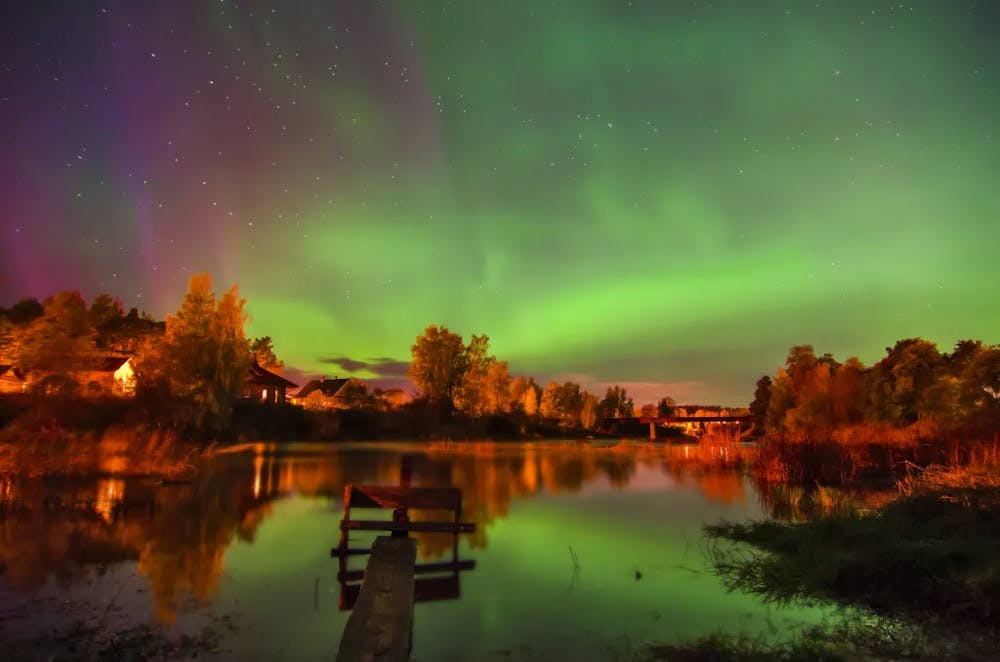sunspots and aurora

Aurora Borealis is a natural phenomenon that has captured the attention and imagination of humans for generations. The Aurora Borealis, also known as the Aurora Borealis, attracts thousands of tourists to the Arctic each year to watch the night sky illuminate in a multitude of colors. While many people used to interpret the auroras in terms of mythology and religion, modern science reveals that they are produced by the sun and that sunspots play a major role in their frequency and intensity. bottom.
Sunspots are directly associated with auroras, with periods of high sunspot activity tending to increase the frequency and intensity of auroras, and vice versa. Read on for a full explanation of how sunspots affect the aurora.
sunspots and aurora

Auroras are caused by the interaction between the solar wind, a term that refers to streams of particles that are periodically emitted from the Sun, and the Earth. The solar wind is deflected by the magnetosphere, an invisible barrier formed by the Earth’s magnetic field. Where the Earth’s magnetosphere intersects with the atmosphere (at the north and south poles), this interaction manifests itself as auroras visible to the naked eye.
Therefore, the frequency and intensity of auroras depend on the frequency and intensity of the solar wind. During periods of high solar activity, more solar wind is emitted and auroras occur more frequently, but they are larger and more colorful. Conversely, during periods of low solar activity, auroras occur less frequently and are smaller in size. Periods of peak solar activity are known as ‘maximums’, while periods during which solar activity is declining are called ‘minimums’.
What role does the sunspot play in this? Sunspots are dark objects at irregular intervals on the surface of the Sun. The Sun’s magnetic field is constantly reversing, with the north pole becoming the south pole and the south pole becoming the north pole. These constant changes in the magnetic field distort the temperature on the surface of the Sun. Sunspots are caused by fluctuations in the magnetic field that impede heat transfer, creating areas of the Sun’s surface that are cooler than the entire Sun.
Sunspots can persist for days to months before disappearing, and can range in size from a few kilometers to 160,000 kilometers in diameter. Furthermore, as the magnetic field constantly fluctuates, sunspots also move on the surface of the Sun, and relatively large sunspots can be observed with the naked eye.
The solar wind is correlated with sunspot activity because the fluctuations in temperature and magnetic fields that produce sunspots lead to a feedback loop in which excess particles are ejected into space. This means that during periods of active sunspots, auroras are more vivid and more frequent on Earth due to increased solar wind emissions. Conversely, during periods when there are few or no sunspots, the auroras are smaller and less frequent.
Solar activity has been tracked by scientists for centuries, identifying changes in the sunspot cycle. For example, it has been observed that the magnetic poles of the Sun flip every 11 years. During the peak of the cycle, when the poles are located near the Sun’s equator, magnetic fluctuations increase sunspot activity, resulting in stronger solar winds and more frequent auroras. Scientists predict the next peak in the solar cycle will be around 2025.
In addition to this, longer periods of solar activity have also been observed. 2008 marked the end of the “Modern Maximum,” a period of increased sunspot activity that began in 1914 and resulted in increased auroral activity due to global warming and solar winds. A similar period occurred during the Medieval Maximum, from 1100 to 1250. The end of this period was the Little Ice Age, when temperatures dropped worldwide.
Scientists have not yet been able to identify the cause of these longer-term maxima and minima, or how to predict them. However, sunspot activity has declined significantly since 2008, leading many scientists to believe that the Sun has entered a new minimum. This means that in the near future, auroras will become less frequent and smaller in size than seen during the Modern Maximum.
Contrary to some claims made online, the phenomenon of sunspot activity does not mean that auroras will disappear altogether. Sunspots still occur regularly even during periods of declining solar activity, and naturally the Sun is constantly emitting the solar wind. However, due to the decrease in the solar wind, auroras will become less frequent and less intense than during the Modern Maximum.
summary

Sunspots are a natural phenomenon that significantly affect the habitability and climate of the Earth. Sunspots, in particular, affect the amount of solar wind emitted toward the Earth’s magnetosphere, which greatly affects the auroras. However, solar activity should not be an influencing factor in the decision to travel to the Arctic, as auroras continue to occur regardless of sunspot activity. If you have an interest in the Northern Lights, book an Northern Lights viewing trip and prepare for a once-in-a-lifetime experience.
